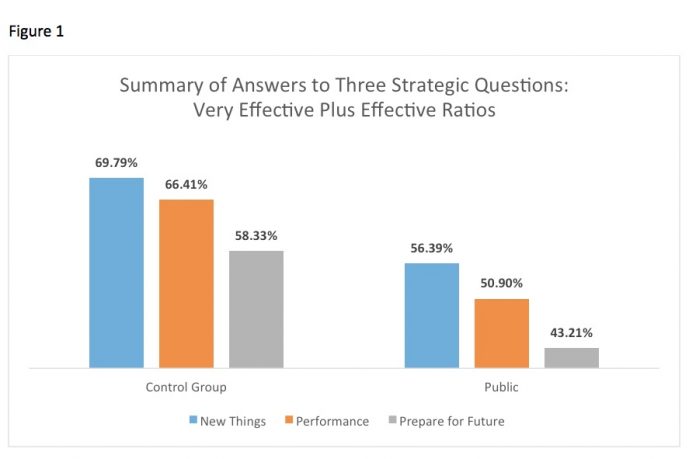
How do most industries measure the satisfaction of their consumers? Most ask their consumers how they are doing. It’s not all that complicated. How much credibility would we give a report on the cable industry if the only survey participants were cable services providers? Probably not much. On the other hand, when consumers say some of the leading cable services providers are the least respected companies in the U.S. economy, we pay attention. Obviously, something is going on when consumers sound off like that.
The training industry, however, seems to stand alone in the way it gauges how it is doing. In survey after survey about the state of the industry, the providers of employee training services are the survey participants. In an effort to sort out how employees perceive the training their employers provide, BizLibrary conducted a comprehensive survey of employees in summer 2015. More than 1,800 employees responded in two broad categories:
- 1,000-plus responses from “public” organizations
- 800-plus responses from a group of employees we’ll refer to as our “control” group
The control group of employees happen to work for clients of BizLibrary, but the critical factors about this cohort of the survey is that we know a lot about their training programs. As it turns out, the structure of the training programs makes a massive difference, at least from the employee perspective in terms of effectiveness.
We asked survey participants three strategic questions:
- How effective do you believe your employer’s training programs are at teaching you new things?
- How effective do you believe your employer’s training programs are at improving your performance?
- How effective do you believe your employer’s training programs are at preparing you for the future?
We also asked about the type of content the programs cover and the amount of time employees spend in training.
Program Effectiveness
As Figure 1 illustrates, employees in the control group reported significantly better perceived results to the effectiveness questions. It is important to note that this data is NOT actual performance data. We wanted to find out how effective employees believe their employer programs are at teaching new things, improving performance, and preparing employees for the future. These perceptions are important. We must convince employees of the value of our training.
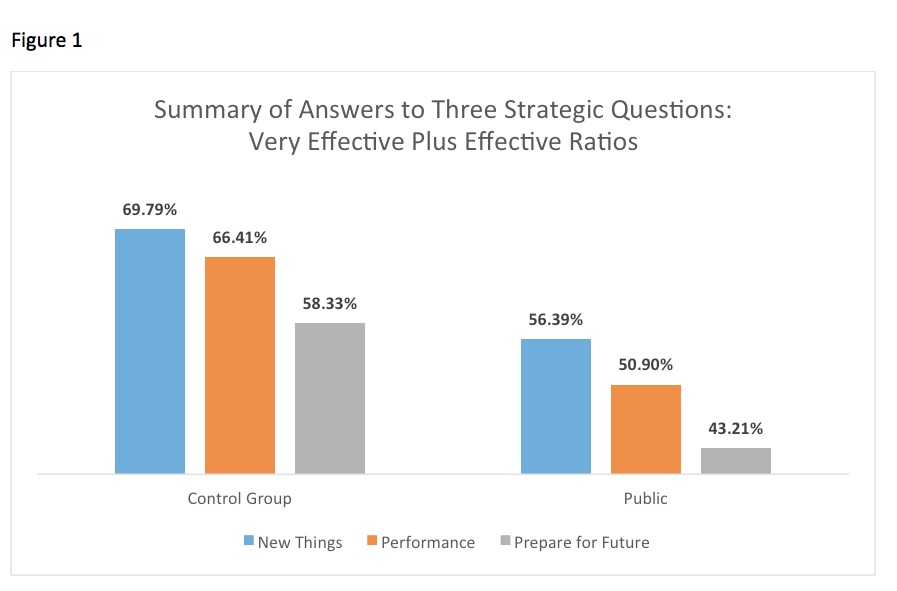
The characteristics of the programs appear to be the differentiator between the control group and public group. In the control group, programs were dominated by technology-enabled training with an emphasis on video delivery of training content. Additionally, employees in that cohort were aware of much broader content offerings than the employees in the public cohort. The public cohort employees also reported training programs with a big emphasis on traditional instructor-led, classroom training. For more details on the findings of the impact of training methods and content, visit http://www.bizlibrary.com/resources/reports.aspx to access free copies of those reports.
Time in Training
In the public cohort, employees said they spend approximately 17.76 hours per year in training. In the control group, employees spend approximately 16.32 hours per year in training.
The control group, which spent slightly less time per year in training, reported significantly better results on the effectiveness front. So at a macro-level, the conventional wisdom that more time in training leads to more learning appears to be mistaken, at least from the employees’ perspective. That means employers don’t necessarily have to provide lengthy training programs for employees to believe they are getting valuable learning.
However, when we break down the data, and look more carefully, we see some interesting elements of data around the time of training both in terms of time spent in tra in ing and the preferred length of time employees told us they want for training sessions.
Unlike the survey questions about employee perceptions about how effective their employer-provided training might be, the questions about the time employees actually spend in training provide much more direct, fact-based information. So the following data isn’t based upon a training leader’s perception of the time employees spend in training. The chart below reproduces the data employees told us about the time they actually spent in training per month.
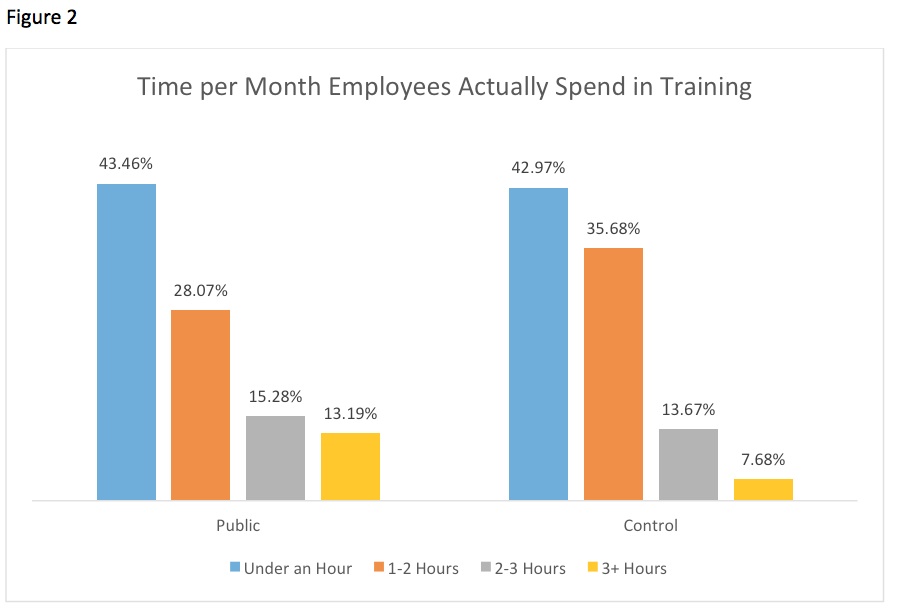
Now compare the survey data about the amount of time per month employees said they want to spend in training.
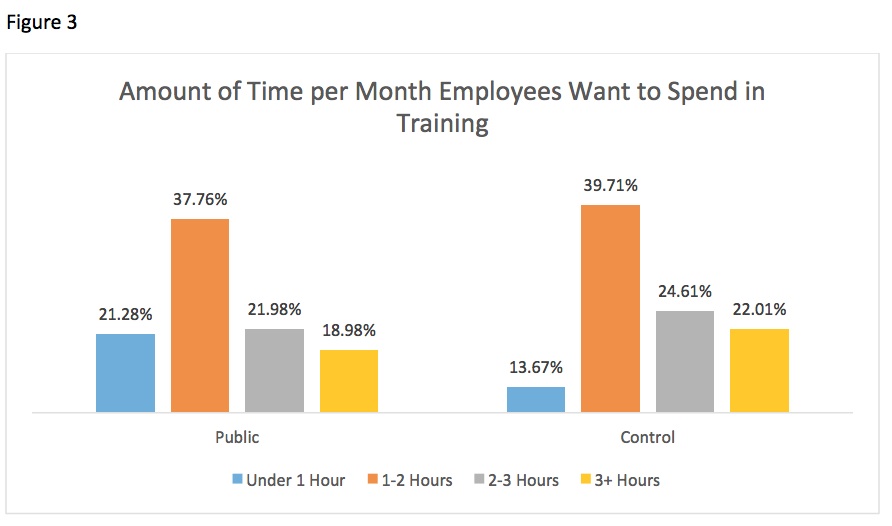
Employees want development opportunities, and the great news is that it’s not wasted effort, at least from the employees’ perspective.
Figure 4 summarizes the aggregated data for answers to the three strategic questions (teaching new things, improving performance, and preparing for the future). We combined the employee-reported perceptions of effectiveness with the amount of time per month employees said they actually spent in training.
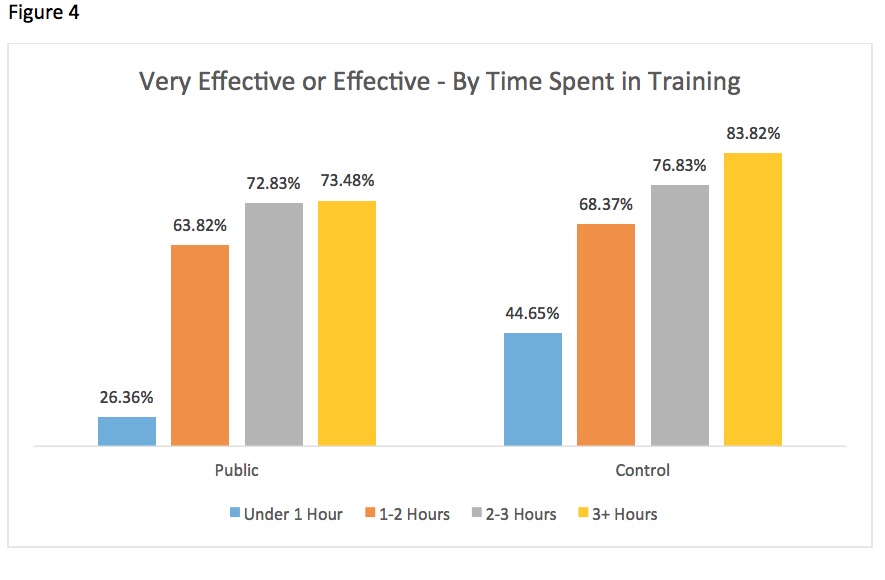
Employees confirmed what most of us already believe. If we can engage our employees effectively in training programs, the impact of the programs appears to increase. Again, this data is limited to the perceptions of the employees. However, when employees believe training helps them, you’ve reached a significant accomplishment. By engaging employees to the extent they will invest multiple hours of their time in training each month, organizations can begin influencing behaviors in significant ways.
How Long Should Training Programs Last?
As we hear more and more about micro-learning and the ability of short-form training resources to deliver real results, we wanted to see if employees perceive the benefits of shorter content to the same extent the scientific data tells us they do. Figure 5 illustrates some interesting data about the ideal length of time for training from the employee perspective.
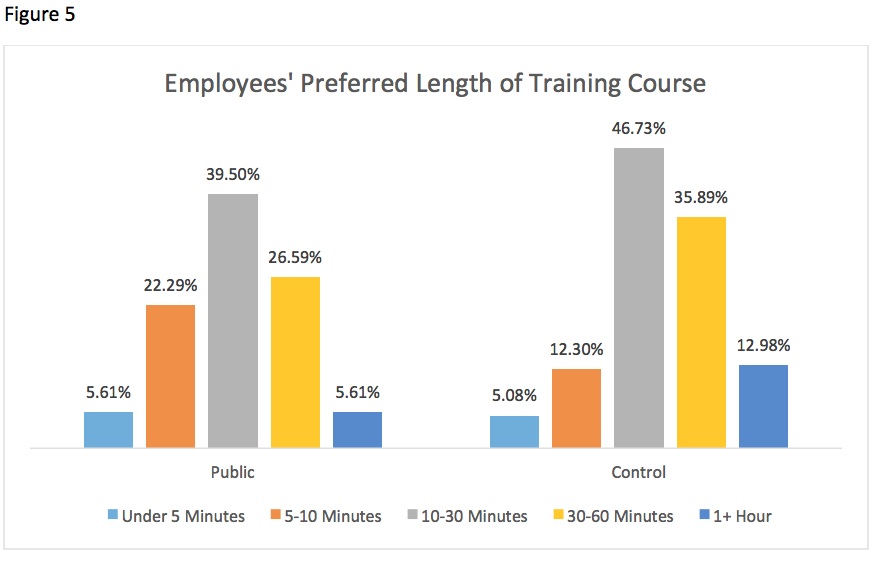
The control group reported significantly better-perceived results in training programs emphasizing shorter, Web-based, video content. The public participants were generally in training programs with much greater emphasis on traditional classroom training and longer-form content delivery. Neither group wants content that’s really long, that much is clear. Of the 1,800-plus participants in the survey, more than 1,200 respondents said they prefer training content of 30 minutes or less.
There are a couple of potential lessons in this. As employees access short-form video on mobile devices, and on-the-go learning becomes the norm rather than the exception, employees’ comfort level and preferences for shorter content likely will grow to even higher levels. Second, the quality of micro-learning continues to increase, which also will raise employees’ comfort level with shorter content.
The caution in all of this is that the do-it-yourself ease video presents is a bit deceptive. Remember, much of the early resistance to e-learning stemmed from the rollout of some poorly executed, self-authored content over the years. It turned many employees and organizations off. As you begin to explore video and other micro-learning training, make sure you select your partners/technology carefully and provide quality, meaningful content to employees.
Chris Osborn is vice president of Marketing at BizLibrary (www.bizlibrary.com), a leading provider of online employee training and e-learning solutions.


